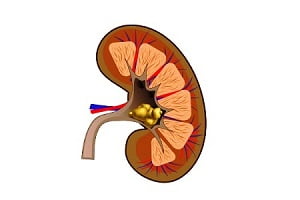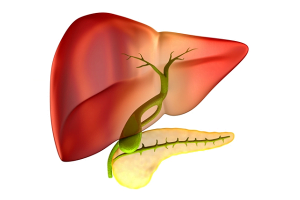
Pregnancy is a special experience for both mother and father. It is filled with joy and anticipation. However, it’s important for expecting parents to be well-informed about every aspect of childbirth, including the potential risks associated with birth injuries that sometimes may be fatal. The majority of deliveries are successful and free from complications. However it is important to be aware of the possibilities and understanding how to reduce any potential risks of birth injuries can significantly improve the safety and well-being of both the mother and the newborn.
Birth injuries refer to any harm or trauma that may occur to a baby during the labor and delivery process. According to Stanford Child’s Health Centre, sometimes during the birth process, the baby may suffer a physical injury that is simply the result of being born. This is sometimes called birth trauma or birth injury.
Birth injuries can vary from mild to severe form and may have long term impacts on your child’s health and overall physical and mental development. It’s essential for parents to understand that not all birth injuries are preventable, but if certain precautionary steps are taken along with being aware of the possibilities of such injuries by gathering right knowledge and preparation, many forms of injuries can be avoided at the time of birth in newborns or their severity reduced.
Here we review ten important facts about birth injuries in newborns that every expecting parent should know to stay knowledgeable about them and accordingly take appropriate precautionary steps.
1. Understanding Birth Injuries
Birth injuries refer to any form of harm or trauma that a baby might experience during the labor and delivery process just because of being born and went through the labor process. These injuries can range from minor bruises that can affect certain body parts to more severe conditions like nerve damage or bone fractures. You cannot prevent all birth injuries, but if you are aware of their potential reasons, your and your doctors can take steps to minimize the risks.
2. Recognizing Medical Negligence
Medical negligence is one of the critical aspects of birth injuries. Birth injury medical negligence occurs when healthcare professionals fail to provide the standard of care that is typically required during childbirth, which can potentially lead to injuries that otherwise are mostly preventable. It’s important for parents to be aware of their rights and the signs of negligence. Some of them are delayed action during complications or improper use of delivery tools. If you are aware of them, you can ensure accountability and seek appropriate recourse if needed.
3. Common Types of Birth Injuries
Several common birth injuries can occur during delivery. These include brachial plexus injuries, which affect the nerves controlling the movement of arms and hands, and cerebral palsy, which is a neurological disorder that affects movement and muscle tone. There can be other injuries such as fractures, facial paralysis, or oxygen deprivation leading to brain damage which can be life threatening. If you are well informed about these conditions, you as parents can recognize symptoms early and seek timely medical intervention.
4. Risk Factors for Birth Injuries
There are certain factors that can increase the possibilities of birth injuries in your kids during labor process. These may include such as prolonged labor, breech presentation, large baby size, the use of assistive delivery devices including forceps or vacuum extractors. Maternal health conditions such as diabetes or obesity can also increase the risk of developing such injuries in your newborns. You should discuss these factors with your healthcare providers to develop a tailored complete birth plan that addresses potential concerns and risk situations.
Here are the important risk factors:
- Large babies: Birthweight over about 8 pounds, 13 ounces (4,000 grams).
- Prematurity: Babies born before 37 weeks (premature babies have more fragile bodies).
- Cephalopelvic disproportion: The size and shape of the mother’s pelvis is not suitable for the baby to be born vaginally.
- Dystocia: Difficulty in labor.
- Prolonged labor
- Abnormal birthing presentation: Such as buttocks first (breech) delivery.
- Maternal obesity: Mother is overweight or obese
5. Preventive Measures and Care
You can prevent birth injuries if you follow a collaborative effort with your healthcare professionals. Prenatal care is important for monitoring your baby’s overall development and identifying any potential complications early in the pregnancy stage on to avoid risks and dangers at a later time. During the labor and delivery process, a clear communication is important between you and your care provider. Adhere to the best practices that your medical team guides you for. Parents can also play an important role by staying informed, asking relevant questions, and advocating for their and their baby’s well-being throughout the process. Do not shy when asking questions to your doctors.
6. The Importance of Prenatal Screening
Prenatal screening is important in preventing birth injuries. These screening tests can help you identify any potential issues that can lead to complications later during the delivery process. For example, you can have ultrasound screenings that can detect abnormalities in the baby’s position or development, which will allow your doctors to do early intervention. Expecting parents should ensure they attend all recommended prenatal appointments and USG screenings to save their baby from injuries and maintain overall health.
7. The Role of Birth Plans
A proper birth plan is important in preventing birth injuries. You should consult and get a proper birth plan from your doctors which should have your preferences for labor and delivery, pain management, positions for childbirth, and the use of interventions like episiotomies or forceps. Discuss these options with your medical team. Get a clear birth plan. Parents can communicate their preferences effectively to their healthcare team, and ensure that everyone is completely on the same page in the ultimate goal of prioritizing the safety and well-being of the mother and her baby.
8. Recognizing Signs of Distress
During labor and delivery, it’s also important for the healthcare team to monitor the baby’s vital signs for any signs of distress, such as an abnormal heart rate without limitations. Quick recognition and response to these signs can prevent birth injuries by allowing for timely interventions, such as emergency cesarean sections or changes in delivery techniques by medical doctors. Expecting parents should feel empowered to ask questions without hesitation and stay informed about their baby’s status throughout the delivery process as it is their right.
9. The Importance of Post-Delivery Care
After the baby is born, immediate and thorough post-delivery care is essential in identifying and addressing any birth injuries in newborns. Newborns should undergo comprehensive examinations to check for signs of trauma or other health issues. Early detection and treatment of birth injuries can significantly improve outcomes and reduce the risk of long-term complications.
10. Seeking Legal Assistance When Necessary
In cases where birth injuries result from medical negligence, it’s important for parents to seek legal assistance and hold the relevant party responsible and accountable. A knowledgeable birth injury lawyer can help you understand your rights, understand the legal process, and potentially secure compensation for medical expenses, ongoing care, and other damages. This support can be invaluable in ensuring that the affected children receive the care and resources they need for their recovery and future well-being.
Key takeaways
You should approach childbirth with a balance of excitement and informed caution with education. By understanding the potential risks of birth injuries and taking proactive steps to prevent them, you can increase the likelihood of a safe and healthy delivery. Remember, knowledge is power—staying informed, communicating with your healthcare team, and advocating for your and your baby’s rights and needs are important to a positive childbirth experience, which will have a significant role in the future development of your child. If you have concerns or questions about birth injuries, don’t hesitate to discuss them with your medical provider or seek legal advice if necessary.




